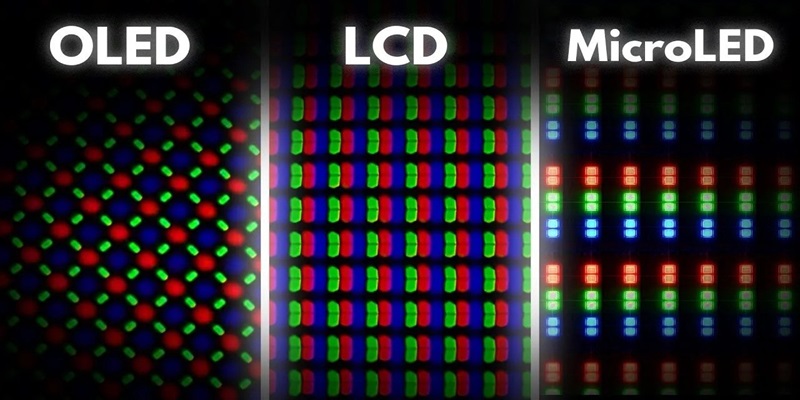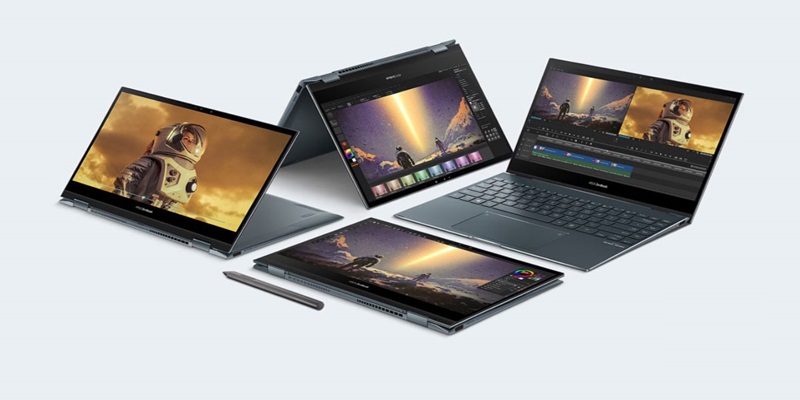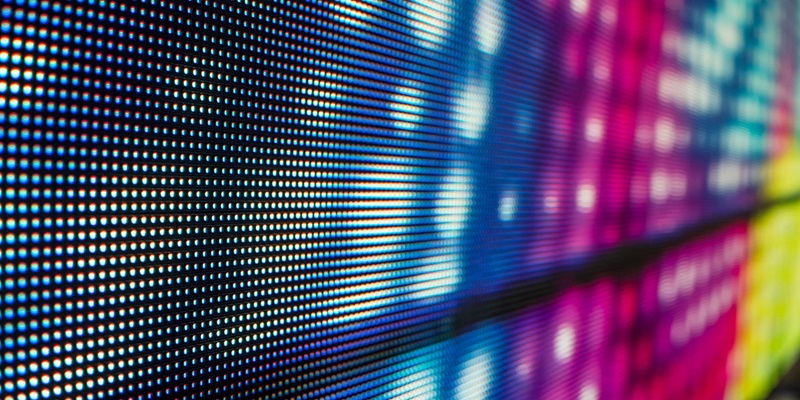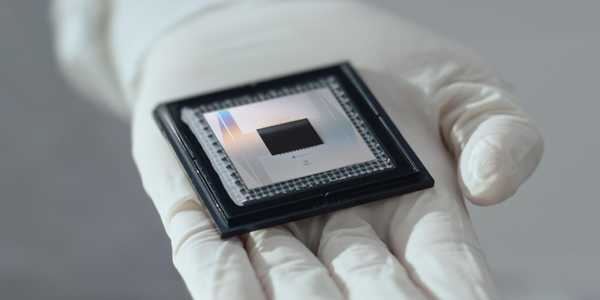OLED vs. MicroLED - The Battle for Display Superiority
Author: Elison
As you navigate the ever-changing field of display technology, two candidates vie for picture perfection: OLED and MicroLED. With both technologies offering unparalleled picture and performance, it's a wonder to behold, but one can claim the supreme title. To make an educated choice, one must know the key differences, strengths, and weaknesses between both technologies.
A Look at OLED and MicroLED Displays

The OLED Display
The OLED (Organic Light-Emitting Diode) technology changed the face of the screen technology forever. OLED panels utilize organic compounds, and when an electric current is run through them, they produce light. Each pixel emits light in an OLED, creating perfect blacks and infinite contrast. OLED technology makes thinner and flexible screens with a rich and deeper range of colors and broader view angles a reality.
The MicroLED Display
The MicroLED technology is a new entrant in the field of display technology. MicroLED utilizes tiny inorganic LED chips to form individual pixels. MicroLED, similar to OLED, is a self-emitting technology with similar contrast and color reproduction capabilities. MicroLED, however, can make for even brighter panels, have a longer life, and consume less energy.
Distinguishing Features
Although both have picture perfection, both have distinguishing factors in several categories. OLED can deliver deep, rich colors and deep blacks; its best use will be in cinema. MicroLED, in contrast, can produce brighter panels, and its best use will be in HDR and a well-lit room scenario. MicroLED panels can also have a modular feature, and one can choose its desired shape and size, a feature not present in OLED.
The Advantages of OLED Display

Better Picture Quality
OLED (Organic Light-Emitting Diode) technology introduces unmatched picture quality, which sets it apart from traditional LCD panels. One pixel emits light in an OLED panel, producing perfect blacks and infinite contrast ratios. With OLEDs having a feature of self-emitting, colors, shadows, and contrast become rich, deep, and full of life with unmatched realism.
Energy Efficiency
The OLED technology is highly efficient in consuming less energy. In darker content, OLED panels consume less power than traditional LCD panels. OLEDs can switch off individually, but not with LCDs, with constant backlight requirements. Not only does less consumption happen, but battery life in handhelds also increases.
The Possibility of Flexibility
The most exciting part about OLED is its flexibility. In contrast to rigid LCD panels, OLED panels can be fabricated in thin, flexible substrates. With this, a whole new universe of form factors opens, with curved, foldable, and even rollable screens and handhelds becoming a reality. With such capabilities, traditional form factors in electronic goods have been overhauled, and new form factors have become a reality regarding display technology.
The Potential of MicroLED Displays

The MicroLED technology is a breakthrough over current types, with many improvements over traditional types and resolving weaknesses. MicroLED technology brings together the best in current types with a new direction in technology.
Superb Picture Quality
The MicroLED display boasts high picture quality with its deep blacks, rich colors, and high contrast ratio capabilities. With MicroLED, one pixel in a MicroLED display emits its light, allowing for a high level of intensity and hue control and a fabulous HDR performance and efficiency in consuming less power compared with traditional LED-backlit panels.
Scalability and Flexibility
One of MicroLED's most exciting features is its scalability. Manufacturers can produce nearly any shape and size of a display by combining smaller MicroLED modules. MicroLED opens new avenues for custom installation in residential, commercial, and public spaces.
Long-term Longevity
Displays with MicroLED have breathtaking longevity, with lifespans estimated at over 100,000 hours. MicroLEDs resist burn-in, which is an issue with OLED panels. MicroLED is a perfect fit for constant-use environments, such as signage and use in a control room, with its durability.
Disadvantages and Future
Although MicroLED technology is full of promise, it suffers economically and in terms of cost-effectiveness in bulk production. Once processes become optimized and economies of scale apparent, MicroLED displays become a reality for buyers. In a matter of years, MicroLED can become a dominant display force in the Battle for Display Supremacy in the marketplace.
The Ongoing Battle: OLED vs. MicroLED
The technology for displays is witnessing a high level of competition between OLED and MicroLED. Two wondrous visualization experiences with vastly disparate methodologies make for an exciting contest for future supremacy when it comes to screens.
OLED: High-End King
OLED (Organic Light-Emitting Diode) displays have been supreme in high-end smartphones and television sets for years. OLEDs have perfect black, infinite contrast, and a high range of view angles. Individual pixels in an OLED monitor produce their light, with complete personal control over individual brightness and colors through individual lights for individual pixels.
MicroLED: Emerging Challenger
The new entrant in the field, MicroLED technology, claims to shatter OLED's weaknesses. MicroLEDs use tiny, inorganic LED chips to create an image. MicroLED boasts picture quality similar to OLED but with future improvement in terms of performance in terms of brightness, durability, and efficiency in terms of consumption.
Main Areas of Conflict
The rivalry between OLED and MicroLED involves a range of factors:
• Brightness: MicroLED takes the win, with its capability for a much brighter peak output.
• Lifespan: MicroLED's inorganic materials could outlast OLED's organic materials.
• Production: OLED technology is older, with MicroLED having its work in terms of its capability for scaling.
• Cost: OLED is less expensive, but LCD will become less costly over time.
As technology continues to move onward, nobody can say for sure who will win in such a competition for future displays. Consumers gain through increased competition, and innovation is spurred on by such competition.
Choosing the Right Display for Your Needs
Think About Your View Environment
Choosing between OLED and MicroLED is worth checking out your average view environment. OLED panels prefer dim environments, with deep blacks and high contrast ratios for glorious looks in dim environments. MicroLED, with its high brightness level, prefers well-lit rooms or exterior environments where glares can become problematic.
Think About What Kind of Content You Enjoy
What kind of content you enjoy can significantly impact your choice of display. OLED can deliver deep colors and infinite contrast, ideal for cinema enthusiasts and used in gaming for immersive experiences. MicroLED is perfect for HDR content, such as rapid motion shots and sports, with its high brightness level and less motion blur.
Think About Long-term and Durability
Think about long-term repercussions for your choosing. OLED panels can burn in with long-term use, particularly when static pictures are displayed often. MicroLED technology, with its durability, boasts a long life and less susceptibility to image retention. Still, it must be mentioned that OLED technology has had excellent burn-inspired burn-int manner in recent years.
The Display of the Future
As you buy your new display, decide between MicroLED and OLED. OLED is at its best for current times with its deep colors and deep blacks, but MicroLED possesses tremendous future potential. With its potential for long-lasting and efficient use, MicroLED can become a dominant player. For current times, OLED is a safe bet for a high-class view for most shoppers. Ultimately, your decision will rely on your requirements, budget, and desire for new technology.



